If it wasn’t about safe navigation, no ship would reach its destination safely. But safe navigation is not only about steering a ship. It is also about navigators being crystal clear about rule of the roads and all the terms used in it.
But not all the terms used in COLREGS are simple or easy to understand. For example while COLREGS has defined the responsibilities in a narrow channel, it fails to define narrow channel.
If navigators do not know what is a narrow channel, how can they apply the rule ?
There are many such confusing terms and I am here to discuss some of these.
Let is break these eggs to know the answers.
1. Underway or Making way
These are simple terms but if we go in details of it, it might not look so simple. But what makes it important to differentiate between these two terms is the inclusion of these in COLREGS.
For example, a vessel not under command is supposed to display different lights when underway and when making way.
Also a vessel need to sound different sound signals when underway and when making way.
So what is the difference between a vessel that is underway and when it is making way.
As per COLREG
The word “underway” means a vessel is not at anchor, or made fast to the shore, or aground.
In simple words when a vessel is afloat and in no way is touching the ground or seabed, she would be underway.
Now COLREG does not give any definition for a ship making way. It is assumed that it is easy to understand when a ship would be making way through water.
So let us see if we understand the difference with these two situations.
- Situation 1: A vessel was at anchor and it just picked up its anchor.
- Situation 2: A vessel is moving in open sea
These two are easy. In situation 1, the vessel is underway while in situation 2 vessel is making way. Now let is see 3 more situations.
- Situation 3: A vessel is moving while approaching a port and it stopped its engine but it is still moving with a speed of 8 knots.
- Situation 4: A vessel is moving up river with 5 knots speed and with 5 knots against current. So in this situation even though vessel’s engine is running but the GPS speed would be showing zero.
- Situation 5: A vessel is heading downriver with 5 knots following current. The vessel has its engines stopped but would be moving with 5 knots GPS speed because of following current.
Now what do you think the vessel is doing in these three situations.
A vessel is “making way through water” or not is not defined by whether or not she is using engines. It is defined by whether or not ship has any speed through water.
There is another factor that we need to take into consideration while deciding if the vessel is underway or making way. We need to know if the vessel is controllable by helm or not.
So in situation 3, vessel still has speed through water. Till the time vessel can alter her course with the rudder, the vessel is making way. But when the vessel’s speed is reduced below which the rudder is not effective and ship cannot alter her course, she would be underway.
In situation 4, vessel’s speed over ground is zero but she is still moving with respect to water. So in this case the vessel is making way through water.
In situation 5, even though vessel is moving with respect to ground, she is stopped with respect to water. Hence vessel is underway but not making way.
2. Speed over ground or speed through water
Speed over ground and speed though water are most misunderstood terms.
In simplest of terms, speed over ground is the speed of a ship with reference to ground. For example how fast a ship is moving with respect to an island, a vessel at anchor or with respect to seabed.
Speed through water is the speed of the ship with reference to a floating object.
Let us understand this with these examples
1. Calm weather with no current and wind
Let us say in calm conditions, a vessel is moving with GPS speed of 15 knots. There is one floating boat parallel to the ship at one point.
In one hour how much distance ship would cover with respect to boat and ground (island).
As there is no wind or current, boat would maintain its position. So the distance covered in one hour with respect to boat and island will be 15 NM. So in this case speed over ground and speed through water will be 15 knots.
2. Same condition with 2 knots adverse current
Now consider the same situation but with 2 knots adverse current. The ship would move only 13 NM in one hour. But the floating boat would also move astern by 2 knots in one hour because of adverse current.
Now how much distance the ship has covered with respect to island (ground) and with respect to floating boat ?
Yes you got it right. In this case speed over ground would be 13 Knots and speed through water (with respect to floating boat) would again be 15 knots.
You can do same exercise with a situation with 2 knots favourable current and I am sure you will get your answers.
So any speed that is calculated with reference to something on the ground is speed over ground. And speed that is calculated with reference to floating object on the water is speed through water.
Let us work out one more situation. A vessel is made fast to a jetty in river which has 4 knots of head current. What will be the speed over ground and speed through water in this case.
I leave it up to you to calculate.
Hint: What do you think will be the speed of the ship with respect to jetty and with respect to a piece of paper floating in river.
3. Narrow Channel or Open sea
While COLREG 1972 was being drafted, Indonesia proposed to define “narrow channels”. Most of the other countries like Finland, US and Germany rejected the proposal and proposed to keep it undefined.
The people who drafted the rules must have either assumed that the meaning is too obvious or too difficult to give a concise definition.
But the navigational incidents because of unclear definition of narrow channel points out to the fact that the meaning of narrow channel is not too obvious.
On 22nd of March 2008, an Ukrainian flagged oil rig supply vessel NEGTEGAZ 67 collided with Chinese flagged panamax bulk carrier Yao Hi. The collision took place in the western approaches of Hong Kong harbour.
The supply vessel sank because of this collision and 18 of the 25 crew died.
Captain of the supply vessel was found to have breached rule 9 (Narrow channel) because he did not keep on the starboard side of the channel.
There were number of debates on the court’s finding which considered this to be a narrow channel. Many experts did not agree with the court’s decision that it was a narrow channel.
The experts argued that even outside this buoyed channel, there was sufficient sea room for the bulk carrier.
Now if in this incidents, so many experts could not agree on narrow channel, it would be unfair on seafarers to expect them to decide correctly on this.
Even COLREGS do not give any definition for Narrow channel. It is left up to the seafarers to decide if something is a narrow channel or not.
But still seafarer would need some base to decide on if they are in narrow channel or not.
The dictionary meaning of channel is
“A navigable passage in a stretch of water otherwise unsafe for vessels.”
Mariner’s handbook defines the channel as
A comparatively deep waterway, natural or dredged, through a river, harbour, strait, etc, or a navigable route through shoals…”
Now this is the definition of a channel, as in the English channel. But how narrow a channel need to be for it to be called narrow channel.
Some define the narrow channel as
- Channel of 2-3 miles navigable waters
- Channel limited by buoys
- Channel at the river bed
- Approach to a port
But if it was so easy to define, IMO would have included it in COLREGS. While we can consider above points for assessing if a channel is a narrow channel or not, while assessing we should alway err on the safer side.
4. Restricted visibility or good visibility
What visibility will you consider as a good visibility ? Or rather what visibility will you consider as restricted visibility ? I mean how many nautical miles ?
This is another term that colregs has not defined clearly and there is a reason for that. COLREG defines what restricted visibility is but navigators may get confused if they do not have a number.
So visibility of how many miles can be considered as restricted visibility ? To understand that we need to understand what is the purpose of COLREGS ? What do we want to achieve with so many rules ?
I am sure your answer would be “not to collide”. So at what minimum distance you can discover a target and still would have time to take action to avoid collision.
But before you think of a number, consider that you have same visibility all around. For example let us say you think you can alter to starboard for a target that you spotted head on at 2 NM to avoid collision.
In this situation you need to consider that on your starboard side too, you can only spot targets in 2 NM range. So would you be sure that if you have few ships at 2.5 NM on you starboard side which you cannot spot visually and if you take action for a vessel head on at 2NM, you would be safe ?
Now if I give you same situation in open sea with not much of traffic, you may consider 2NM as safe distance to take action. This is because you may not have much traffic to analyse in open sea. But in traffic dense areas, 2NM may not be enough to analyze the situation and take action.
Usually 3NM is considered to be safe distance to take action. For a distance lesser than 3NM specially in head on situation, there may not be enough time to take action.
So this is the visibility at which you should extra look out so that you can spot the target early.
Depending upon factors particular to your own ship, you may post the extra look out earlier than that.
But if we talk about action for collision avoidance, it does not matter so much if you take action as per restricted visibility or not.
Need to know why ? That is because if you take action as per “restricted visibility” or “in sight of one another”, your action would be same. Even if it is not exactly same, it would not contradict with each other.
See these examples.
Conclusion: 3NM is usually considered to be safe distance for considering if it is restricted visibility or not. We need to consider ship’s local factors like speed and traffic density to assess the time when we should have extra look out.
For collision avoidance action it does not matter if the action is taken as per restricted visibility ot not as both does not contradict with each other.
5. Safe Speed or unsafe speed
Does safe speed always means slow speed ? Well not always. So what is safe speed ?
It is all in the name. Safe speed is the speed at which vessel will be safe. A vessel would be safe if it has the time to respond to an emergency situation.
Remember the collision of MSC Chitra in Mumbai ?
Here is the excerpt from the investigation of this incident. See what it say.
It is always about having ample time. If we have ample time, we can assess the situation and take action.
Have you seen the passenger ferries crossing the strait of Gibralter at a speed of 35 knots ? Do you think they are proceeding at unsafe speed ?
I do not think so. These passenger ferries can reduce their speed from 30 knots to 5 knots in no time.
Now imagine at same location, a ship moving at a speed of 15 knots. But to start reducing its speed, the engine room would need 30 minutes notice. That is what we call unsafe speed.
When we talk about safe speed, it is not how slow a ship is moving but how fast she can respond to a situation that require reduction of speed.
There are whole lot of other factors that need to be considered to assess what is the safe speed. These factors are outlined in the rule 6 of the COLREGS.
These factors mentioned in rule 6 basically ask us to consider two things to decide safe speed
- How early the target can be detected
- How effective the action of the vessel will be
If the target can be detected easily, for example in good visibility, we can proceed at more speed. But if the target cannot be detected easily then we should move at slower speed and have our engines ready.
There are lot of factors that can reduce the effectiveness of the target detection. Some of these are
- The visibility
- presence of background lights
We also need to consider how effective the avoiding action that we take would be. For example in an area of dense traffic, we cannot just alter our course for a developing situation. We need time to analyse the traffic.
If we are moving at higher speed, the time is what we would not have, specially for head on situation.
There is one theory that says that Titanic did not have the binoculars as the navigating officer could not find the key of the store in which these were kept.
Absence of the binoculars meant that targets could not be detected early. So the ship should be proceeding at slower speed. But the titanic was still proceeding at full speed and the result is the history.
Conclusion
There are many terms in ship navigation that are not clearly defined. This is either because the terms are too obvious or the scope of a term cannot be defined in few words.
Whatever the reason, navigators should be clear about these terms. While assessing their own definition, navigators should err on the safer side.
Share this:

About Capt Rajeev Jassal
Capt. Rajeev Jassal has sailed for over 24 years mainly on crude oil, product and chemical tankers. He holds MBA in shipping & Logistics degree from London. He has done extensive research on quantitatively measuring Safety culture onboard and safety climate ashore which he believes is the most important element for safer shipping.
Search Blog
53 Comments


Thanks,for clear explanation

Glad you liked it Saleh..

Nicely written and explained in easy to understand language. Keep the good work on. All the best.

Thank you for your kind words Capt Bhabha..

Thank you sir for such a good information and you explained well in easy terminology.

Glad you liked it Sudhanshu..

Well explained in easy words. Thanking you.

Thank you for reading Pankaj..

Small things are making the difference.Keep up the nice work sharing with us

Thank you for your kind words George...

I'm not sure what is more worrying, the fact that the writer felt that there was need to write the article, or the fact that there appear to be so many people (navigators) who don't know this. We learned it on our first trip as Cadets, and it was subsequently drilled into us at college. A thorough working knowledge of the Collregs (with some common sense), tells one, all that one needs to know.

Hi Edward. I felt the need to write on these topics because I received lot of emails asking these questions. And I feel it is wrong for us to give an impression that the question is too obvious even if it was. But in these cases it wasn't. For example narrow channel looks too obvious but it isn't. Like <a href="http://www.incelaw.com/en/documents/pdf_library/strands/shipping/article/narrow-channels-a-recipe-for-injustice.pdf" target="_blank" rel="nofollow">this report</a> shows how complicated these simple things actually are. In the case of collision between the vessels (incident that I mentioned in the blog) the Master was sentenced to 18 months in jail because he failed to keep to the starboard as he thought it is not a narrow channel (many experts believe he was right). So I humbly beg to differ from your opinion.

Rajeev Jassal... thats a cool cool answer. Keep it up a good work. I admire your work and effort. I really like to read everything in your blog. Outstanding.

Thanks Jack..

May I add, please, for the benefit of all I hope, that a tremendous number of shipping, yachting (my sphere,) and indeed commercial aviation accidents are caused by the assumption that certain things are "obvious." When I refer to an assumption, remember that it could be yours or the other guy's. I do believe in the incompetent/incapacitated/moron factor, and I am a proud enough Captain, but I also believe that sometimes situational stresses cause us to neglect to come back to the basics, which, in the case of the COLREGS, are sometimes purposefully nebulous.... Because common sense needs to be flexible. I believe that this is often Rajeev's 'big idea,' and it is mine as well. In short, as far as I know, we share the seas and "THIS IS THE WAY IT'S DONE, DUFUS!" never kept a collision from happening.

Clear explanation...thanx

Glad you liked it Ali..

Sir i am convinced with your answer sir will be quoting the above answer to the surveyor , however, as far as restricted visibility is concerned , can we think of master's standing order and the details mention about the range of RV . Can we assume it to be the actual range at which the RV exist as mentioned in Master's standing order?

No Nitin.. Master's standing orders are his orders. As a Master I may want the OOW to inform me when viability is less than 6 mile but that will not be restricted visibility..

Hi sir I'm getting so confused about a close quarters situation And different from risk of collision where expressed at rule 19 part d and e besides in collreg.thanks

Hi.. I did not get what you are confused about. Can you please ask a specific question and I will try my best to answer it. You can also ask your questions in SEAQA section.

Hi sir as you have rightly said that the definition of Making way through water is not mentioned in ROR. I have a little different opinion than you. In my opinion Making way through water simply means whether she has got any speed over water ie if her doppler log is showing some speed other than very close to zero over water she is making way; else she is underway and stopped. It has got nothing to do with steering capability. Consider a vessel which is doing 15 kts and her engine and Steering both fails so as per your opinion she shall be called NUC vessel Underway and not making way since she could not steer. NUV vessel has to show side light and astern light when it is making way. It is so because it should be apparent to the other vessel that it has got speed over water and other vessel should take action considering the fact that an NUC vessel is approaching ie she is doing some speed over water. And if an NUC is just showing two red all round light and non of her side lights and astern light it means that NUC vessel is stopped and she has no speed through water ie she is simply drifting. I request you to explain if my understanding is wrong.

Hi Jyoti, You have made some good points but as you said "speed very close to zero", can speed of 2 knots be considered very close to zero ? This is ambiguous. A ship can have Doppler speed of 2 knots while using the engine or even when she is drifting (when speed is affected by wind and not by current). When I see a NUC ship with 2 knots, I as navigator would not like to know if she is moving or not (this I can make out) but i want to know about her incapabilities. I am not saying the point you made is not valid, there is definately an ambiguity in "making way" and that is the reason its definition is not included in the Colregs. Colregs has left it to us.

Good Day Sirs. I agree with Capt Rajiv Sir about definitions of making way. It's most accurate and closest possible. As well Jyoti sir's points about NUC vessels are also very sensible. But to contradict with it , I would put one point which will prove that a NUC vessel without Steering and engine and proceedings at 15 knots will be considered making way. Capt Saab have clearely mentioned that vsl shall able to alter her course to considered to be making way. 1)A NUC vessel in above situation can still steer using Emergency steering procedures i.e. using dragging weights - so she will be considered making way. 2)A NUC vessel will be considered underway if she can't alter her Course.

First ,of all wud like to appreciate ur kind efforts for sharing ur thoughts.Further can u pls enlighten one of my doubts ......Ques) v/l dragging anchor ? underway or not, if underway then little explaination?.... considering it as an exceptional case even though she is touching the ground by virtue of its anchor it will be considered as underway only ,since at times anchor may be leaving sebed evn thou for a short period.(but i doubt my explaination)....................Ques) Difference between close quarter situation/risk of collision/impeding the safe passage??

Yes.. you are right about ship dragging anchor being underway. The 2nd question has been answered in SEAQA section . Check that out.

Very useful to mariners.

Glad to know that Jishnu...

Many thanks sir !

Thanks Nishant...

Good professional inputs.... simple and clear.

Thank u sir for sharing...Sir u have an article for 4stages of collision

Dear sir, Can you please explain the difference between end-on and head-on??????

Very nicely explained. Thanks a lot!

How to identify the vessel not under command making way and vessel aground at when seen from stern ?

@UDAY think of Rule 5 upto your maximum imagination

@UDAY think of Rule 5 upto your maximum imagination

Nice Blog sir

thank you sir, ur blogs are really great. it always helps me.. plz keep ur good work in continued way sir. we need you !! really appreciate it... thanks again.

That's really informative post. I appreciate your skills, Thanks for sharing.

Good day all. Very interesting discussion here wrt making way & underway. I would simply put it as, any vessel which is making a headway should be considered as a vessel "making way" irrespective of the engines running and/ or the vessel being able to maintain its course. I say this simply because if we are to encounter a similar situation in RV and a vessel is stopped and underway and making no way thru water. Now how will you decide on blowing that TWO PROLONGED BLASTS. If your vessel is making headway at a speed of 1 knot and is unable to steer due to lack of speed what would you do? As per all the explanations above this is a case of vessel being underway and therefore you will sound TWO PROLONGED BLASTS. I am afraid I respect your point of view but i beg to differ. I would, as a prudent Master sound ONE PROLONGED BLAST to ensure that the vessels in the vicinity get the correct picture that I am still moving at a speed of 1 knot in some direction. And that will confirmed by the vessel observing me in her RADAR screen too and there is no ambiguity as to weather the vessel showing on radar screen is showing a speed of 1 knot where as the sound signal being heard is of a vessel being stopped. BEFORE WE GIVE OUT THIS TWO PROLONGED BLASTS WE MUST FULLY ENSURE THAT WE ARE NOT MAKING WAY AND ARE COMPLETELY STOPPED AND JUST UNDERWAY. Many may not agree with me but there are instances where the judges have held this view that any vessel making any kind of headway cannot be considered as a vessel underway and not making way. I think the rules are pretty clear with regards to underway and making way. Its just that we need to get a very good grip on understanding the same considering all the aspects at the same time. This can get really confusing at times. Best regards.

Thanks a lot for these important points of colreg.

Thanks Sir for giving your great time..

Hello rajeev sir, you just rock it. Thanks for this guide. I am from minnesota and i frequently read your article, I have one power boat and i generally move it using Citizenshipper haulers in minnesota. https://citizenshipper.com/boat-transportation/minnesota.

hello

According to Value Market Research, the latest technology trends and global market opportunity analysis in the Marine Engines Market industry growing with a high CAGR in the upcoming year. Our report has categorized the market based on technology, service, development, vertical and region. https://www.valuemarketresearch.com/report/marine-engines-market

According to Value Market Research, the latest technology trends and global market opportunity analysis in the Flight Navigation System Market industry growing with a high CAGR in the upcoming year. Our report has categorized the market based on technology, service, development, vertical and region. https://www.valuemarketresearch.com/report/flight-navigation-system-market

I am really happy to say it’s an interesting post to read . I learn new information from your article , you are doing a great job . Keep it up

Great information! Thank you for sharing with us. Keep sharing...

Congratulations about the post! I would like to include to this distinct list the word "UKC". We all know that "UKC" comes from "Gross Underkeel Clearence" or "Gross UKC" or as usual the simplest and very known "UKC". ...Never forgeting that there is the "Net UKC" that is mentioned in the academic literature as a safety margin, that is one of the factors related to the ship, which PIANC experts call as "Design Water Level " You shoul know that some portuguese spokers make intentionally or non intentionally a very strange translation of these words, that confuse even experts. For instance, this could lead a very dangerous safety of navigation issue. Please take that into consideration, when navigation at South American territorial waters!
Leave Comment
More things to do on myseatime

MySeaTime Blogs
Learn the difficult concepts of sailing described in a easy and story-telling way. These detailed and well researched articles provides value reading for all ranks.

Seafarers Question Answers
Ask or answer a question on this forum. Knowledge dies if it remains in our head. Share your knowledge by writing answers to the question

MySeaTime Podcast
This podcast on the maritime matters will provide value to the listeners. Short, crisp and full of value. Stay tuned for this section.

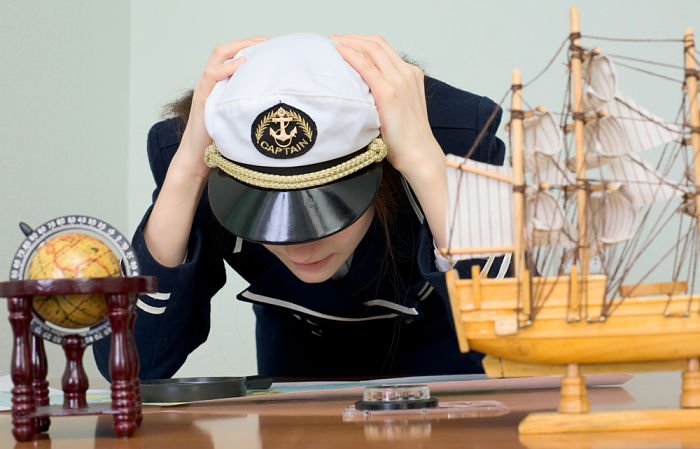
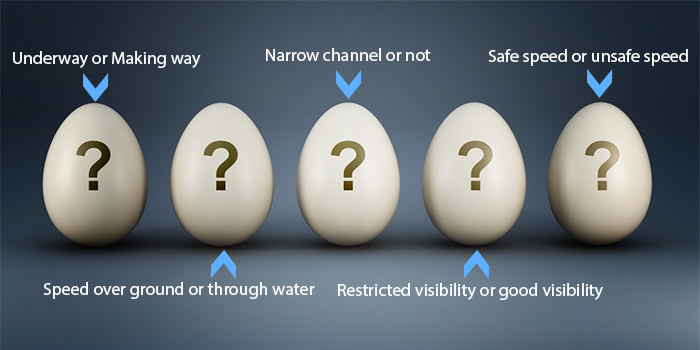
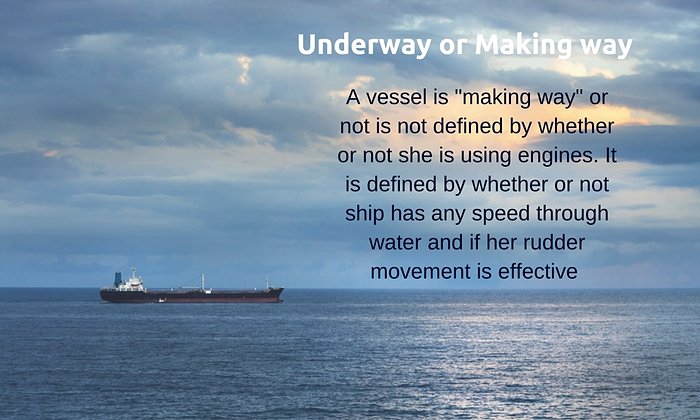
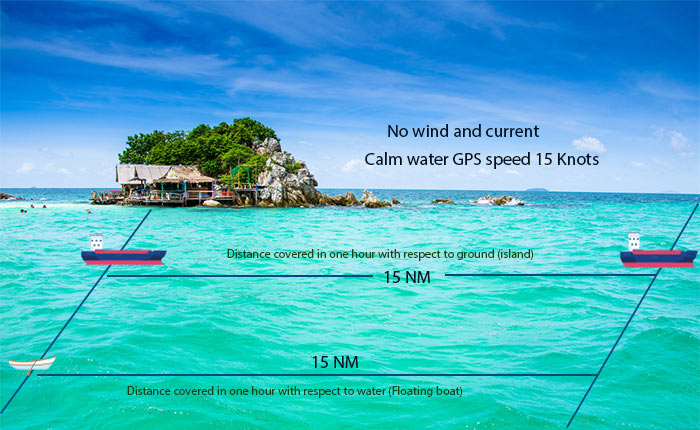
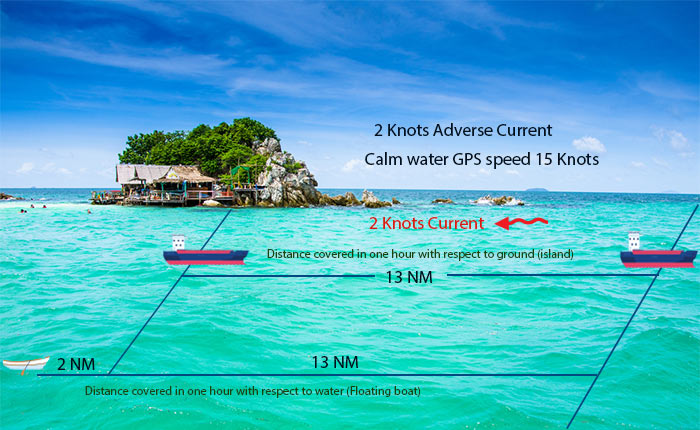
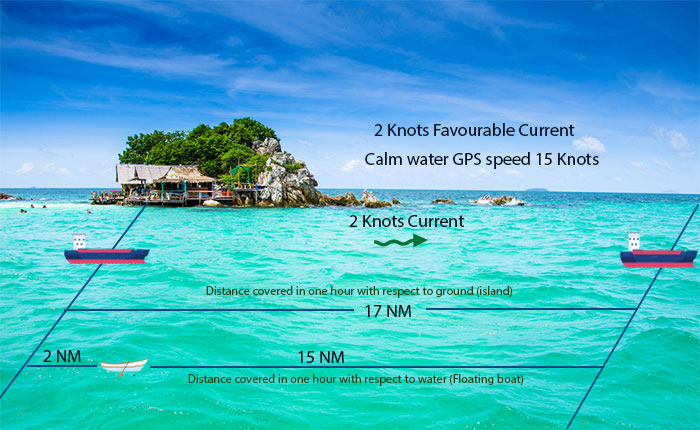

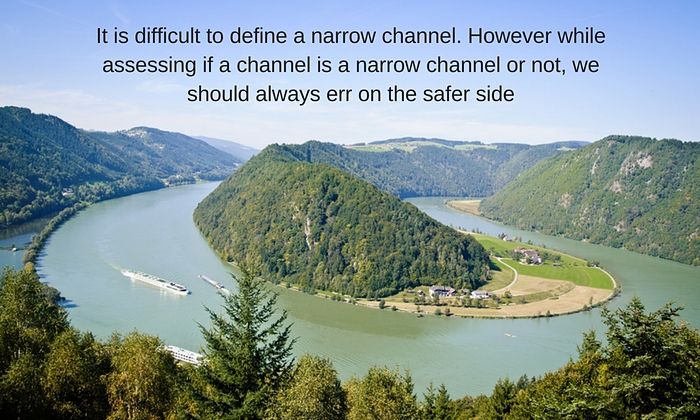

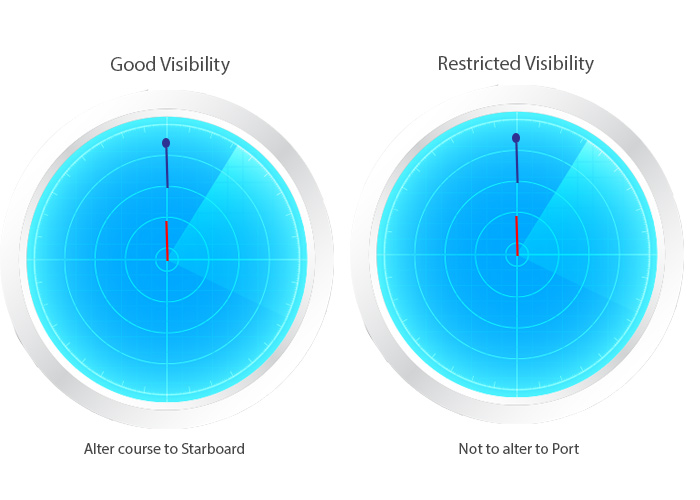
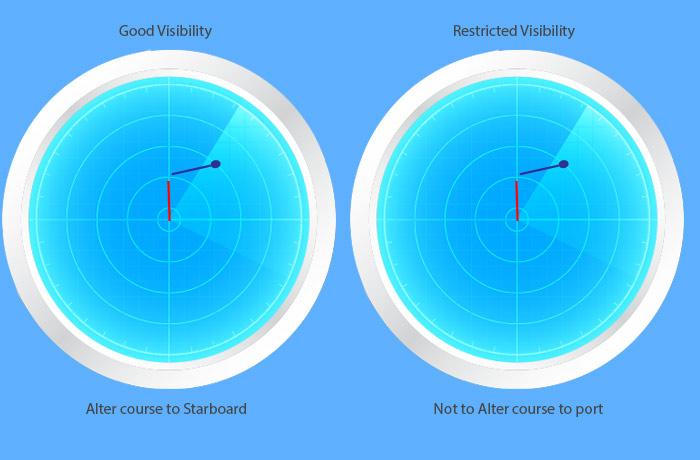
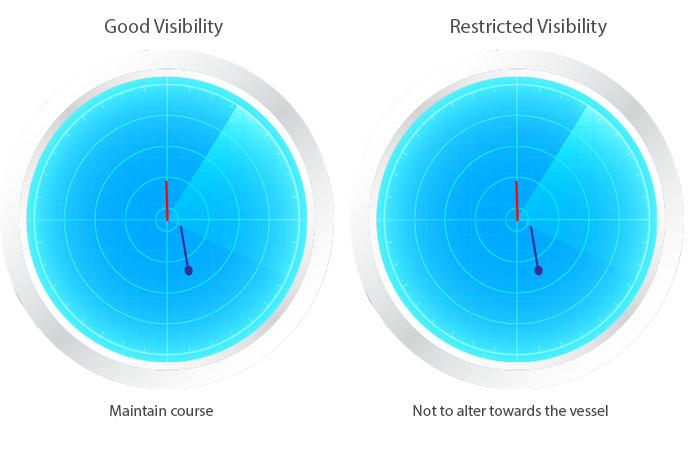
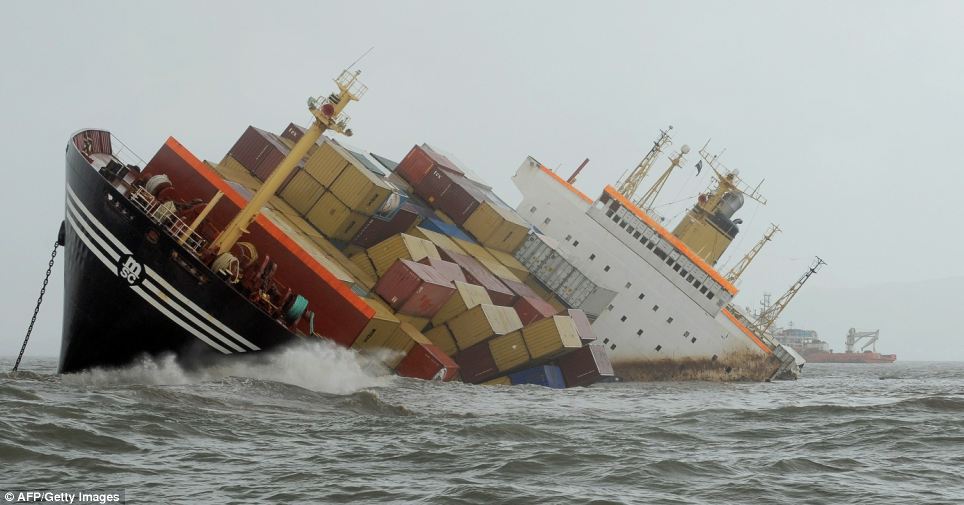
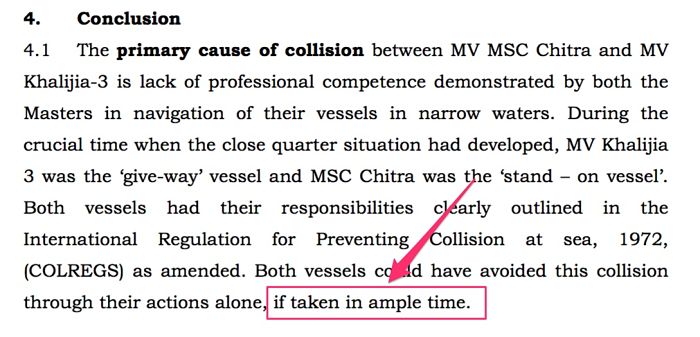
Thanks a lot sir....I asked the diff between underway and makingway in your articles...but no response was there...finally got it..u so much...would plz explain the meaning of close quarter situation too
Glad you liked it and I hope you got the answer for your question. Close quarter situation is a situation where a reasonable person would think that there is a risk of collision. This would depend upon factors like size of the vessel.